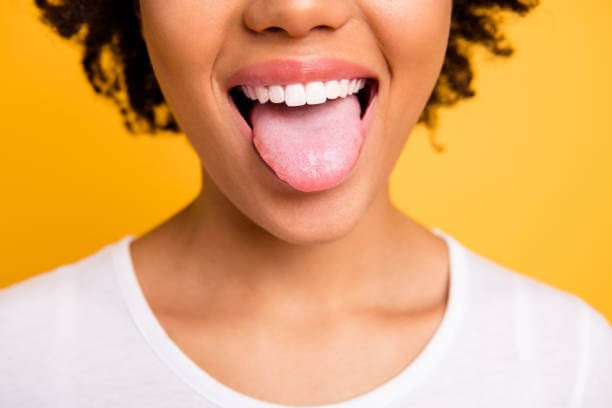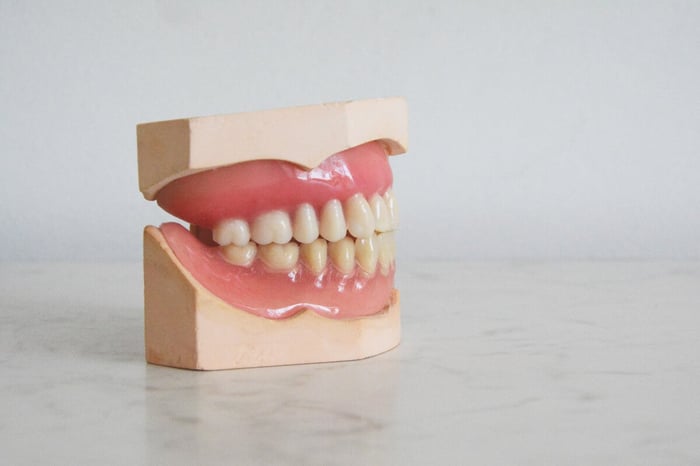BURNING MOUTH SYNDROME: EVERYTHING YOU NEED TO KNOW
Overview
Burning mouth syndrome (BMS) is a relatively common condition that leads to a feeling of burning in the mouth. The location of the sensation is usually on the roof of the mouth, tongue, or lips. (1) In some patients, BMS is only a temporary condition that they have to deal with; however, others can develop the chronic form of BMS, which presents with periods of flareups and remissions.According to the American Academy of Oral Medicine (AAOM), nearly 2% of the population have BMS. Additionally, females seem to be more likely to develop this condition than men.
In this comprehensive guide, we will cover all the details you need to know about burning mouth syndrome, including its epidemiology, causes, symptoms, treatments, and alternative solutions.
The epidemiology of burning mouth syndrome
In a study conducted in the United States, researchers asked 41,000 households to answer a questionnaire about whether they have experienced symptoms of BMS. The described symptoms included an unexplained sensation of mouth burning in the past 6 months. (2)
After analyzing the results, an estimated 0.7% of the population answered positively.
Another study found that the prevalence of BMS reached up to 0.11%. However, researchers noted that the accuracy of their data may not be very high due to the lack of consensus about diagnostic protocols. (3)
Although both the studies mentioned above found a similar prevalence, a research paper in Sweden reported a prevalence of 5%. (4)
In most studies, the authors found that the mean age of developing BMS was around 60 years old. Albeit, the individual cases varied greatly, with positive cases at both age extremes (37 years – 81 years).
With that said, all the studies agreed on the predilection of women to BMS compared to men, with a whopping ratio of 5:1. Even more pronounced, a study conducted in the Netherlands found this ratio to be as high as 9:1.
Symptoms of burning mouth syndrome
Like many conditions that affect the oral cavity, the severity of BMS symptoms varies greatly from one person to another. On one end of the spectrum, you will see people complaining of a burning sensation when they eat hot food. On the other end, patients describe BMS symptoms as scalding.
Unfortunately, the chronic form of BMS could have a toll on patients since they have to deal with the symptoms for months or even years. Therefore, each food or drink becomes a torturing experience.
The info graphic below depict the signs and symptoms of Burning Mouth Syndrome:

Causes of burning mouth syndrome
Researchers have yet to identify the specific causes of BMS. However, and depending on the type you have, there are different risk factors.
Primary burning mouth syndrome
Primary or idiopathic BMS means we do not know the origin of the condition. Since burning mouth syndrome could be the result of an array of diseases, your physician needs to exclude all the potential diagnoses in order to confirm that it’s primary BMS. (5)
The following tests may be useful in excluding other causes of BMS:
- - Blood test
- - Oral Swab
- - Allergy test
- - Sallivary flow test
If none of the underlying illnesses explain BMS, your doctor may pose the diagnosis of primary BMS. If you hear this term, just know that there is no identifiable cause of your condition.
Note that the advances made on a daily basis in the field of medicine could allow us to unveil the mystery of primary BMS and other idiopathic diseases.
Secondary burning mouth syndrome
Secondary BMS is simply the manifestation of other illnesses.
So far, scientists have managed to pinpoint the following risk factors for secondary BMS:
- - Hormonal changes
- - Allergies
- - Dry mouth
- - Mouth infections
- - Acid reflux
- - Medication
- - Nutritional deficiency (e.g., iron, zinc, vitamin B)
- - Poot dental hygiene
- - Chronic inflammation
Oral hygiene mistakes that predispose you to burning mouth syndrome
Many people develop secondary burning mouth syndrome due to poor oral hygiene without even realizing what they are doing wrong.
Therefore, this section will some common mistakes that you make when you brush your teeth and clean your mouth.
Brushing too fast
Throughout studies, researchers confirmed the importance of brushing your teeth for at least 2 minutes. Additionally, you should do it 2 or more times per day; one before bedtime and another during the day.
According to reports from the Academy of General Dentistry, the average person brushes their teeth for 45–70 seconds per day. In other words, if you are brushing your teeth twice a day, each cleaning session lasts 20–35 seconds (a quarter of the recommended time).
A common complaint from people is how to estimate the time spent brushing the teeth. To solve this issue, you can do the following:
- If you have a normal toothbrush, use a timer on your phone to estimate the duration.
- If you have an electric toothbrush, they usually buzz after every 30 seconds of use; therefore, you need to brush your teeth through at least four buzzes.
You should also brush your tongue gently.
Rinsing your mouth after brushing
Generally speaking, most people rinse their mouths after brushing their teeth with toothpaste. Unfortunately, that’s the wrong way to do it.
You see, the fluoride and enamel-protecting properties of the toothpaste are essential to optimize the health of your oral cavity and teeth. Therefore, if you choose to rinse your mouth after this process, you’ll be sacrificing all the beneficial compounds found in the toothpaste.
To get around this bad habit, learn how to spit the water after brushing your teeth. Of course, and like any new habit, this will take some time to get used to, but it will be worth it.
Choosing the wrong toothpaste
Despite the hundreds of millions spent on advertisements to showcase the superiority of one toothpaste product over the others, there is no single best product for everyone.
Each toothpaste contains a variety of ingredients that may be beneficial for one person, damaging for another, and have no effect on the third.
For this reason, you should speak to your dentist or dental hygienist to choose the best toothpaste based on your needs and goals. Only these healthcare professionals are familiar with the anatomical and physiological properties of your mouth.
Bad time for brushing
Whenever you consume something that contains large quantities of acidic compounds (e.g., lemon juice), the acid gets rid of the protective layer that saliva forms. As a result, you are more likely to damage the structural integrity of your teeth if you brush them shortly after the meal.
For this reason, experts recommend waiting for at least 30 minutes to allow the saliva to recover. This may be inconvenient for people since they want to get rid of the food’s taste as soon as possible. However, it is essential. As an alternative, try to rinse your mouth with water as it helps temper down the intensity of the taste and odor.
The other example of bad timing is not brushing your teeth regularly. In this case, the deposits from the food and drinks you had all day will wreak havoc on your enamels, which predisposes you to a myriad of dental problems.
Going too hard on your mouth
Brushing your teeth too hard can lead to the classic process of wear and tear. Consequently, you may experience gum bleeding and tooth decay – a recipe for oral infections that trigger burning mouth syndrome.
Contrary to popular belief, brushing your teeth too hard won’t make them any cleaner or whiter. In fact, manufacturers added a useful feature to electric toothbrushes, where they turn on a light whenever you’re brushing too hard.
The correct technique involves brushing at a slight angle and focusing on each individual tooth. Researchers found that brushing square to the teeth and the generic side-to-side scrubbing is not the best way to clean your teeth.
Burning mouth syndrome and menopause
We already established that burning mouth syndrome is more common in women; however, researchers found that the vast majority of females who develop this condition have gone through menopause.
According to one study, 18–33% of postmenopausal women have BMS. (6)
If you go back to the first risk factor of secondary BMS, you will find hormonal changes. This is exactly what occurs in postmenopausal women due to the significant drop in estrogen levels. Consequently, the production of saliva decreases, which leads to a metallic taste in the mouth and triggers a burning sensation.
Estrogen also has potent analgesic properties, which means that postmenopausal women are more sensitive to pain. (7)
In case your BMS is connected to menopause, your doctor may suggest hormone replacement therapy (HRT) to smoothen the transition and prevent sudden hormonal changes. (8)
Mental diseases associated with burning mouth syndrome
In the 20th century, scientists believed that BMD could result from a psychological profile that hosts anxiety and depression. This hypothesis was viable until the last few decades of the past century.
Today, we know that some mental disorders are more likely to occur in patients with burning mouth syndrome.
These include:
Alexithymia
Alexithymia refers to the inability to describe your feelings of those of others around you.
Anxiety and fear
BMS predisposes patients to all forms of anxiety disorders, which precipitates feelings of excessive fear, anxiety, and behavioral abnormalities.
Panic attacks can also occur in these patients, especially when the symptoms are severe.
Depression
Depression presents with symptoms of sad mood, inability to enjoy any activity, and suicidal thoughts. While it is difficult to attribute depression to burning mouth syndrome, there is some evidence that supports this association.
Hypochondria
Hypochondria may develop in patients with chronic BMS, where they experience excessive and irrational fears of getting the disease.
Treatments for burning mouth syndrome
Anesthetic Lozenges
In one study, researchers found that lozenges that contain 5 milligrams of bupivacaine given three times a day for 2 weeks led to impressive clinical improvement in patients with burning mouth syndrome relative to placebo. (9)
The authors of the study focused on examining the following parameters:
- - Oral mucosal pain
- - Xerostomia (i.e., dryness of the mouth)
- - Taste alterations (using a scale)
Unfortunately, these lozenges are not available commercially.
Fluoxetine
Fluoxetine is an antidepressant that belongs to the Selective Serotonin Reuptake Inhibitors (SSRIs). Using this drug to treat primary and secondary BMS led to improved psychological and pain status in patients.
The recommended dose is 20 mg/day for 3 months. After this duration, the dose is usually adjusted, depending on the clinical outcome. (10)
Paroxetine
Paroxetine is another antidepressant of the SSRI class.
In a 12-week study, 52 patients with BMS received paroxetine. By the end of the study, 80% reported significant pain reduction. The higher the dose, the more relief experienced by patients. (11)
Venlafaxine
Venlafaxine is an antidepressant from the serotonin-norepinephrine reuptake inhibitors (SNRI) family. Some doctors may prescribe this drug in combination with clonazepam to relieve the symptoms of BMS.
Alternative treatment for burning mouth syndrome
Since burning mouth syndrome could result from an inflammatory process, it would make sense that following an anti-inflammatory diet would help.
However, and due to the lack of clinical research in this field, there is little evidence to support this hypothesis.
Nevertheless, an anti-inflammatory diet will improve every aspect of your life and could potentially help with BMS.
First, let us understand the triggers of inflammation:
What causes inflammation?
Chronic inflammation is the accumulation of years of bad lifestyle habits.
For instance, consuming foods rich in sugar and high-fructose corn syrup promotes the secretion of proinflammatory cytokines. Following this way of eating for years could precipitate chronic inflammation.
Researchers also found a connection between consuming refined carbohydrates and inflammation, obesity, and insulin resistance.
Even more, consuming processed foods with high concentrations of trans-fats and chemicals promotes inflammation and deteriorates the lining of your blood vessels.
Vegetable oils are another potential culprit that may disrupt the balance between omega-3 and omega-6 fatty acids, a process that promotes inflammation.
Drinking too much alcohol and eating large amounts of red meat may be another contributor to this state.
Finally, living a sedentary lifestyle and being obese could also trigger chronic inflammation.
What is an anti-inflammatory diet?
An anti-inflammatory diet describes increasing the consumption of anti-inflammatory foods and lowering inflammatory products.
Following this diet translates to eating whole foods rich in antioxidants and anti-inflammatory compounds.
Each meal should consist of protein, complex carbohydrates, and healthy fat. You also need to get enough vitamins, minerals, electrolytes, fiber, and water through your diet.
We should emphasize that there isn’t one single anti-inflammatory diet. You see, any diet that fits the eating pattern described above can be considered an anti-inflammatory diet.
A prime example of this way of eating is the Mediterranean diet, which significantly lowers inflammatory markers (e.g., CRP, ESR) thanks to its diversity and healthy ingredients.
Anti-inflammatory foods that may help with burning mouth syndrome
Kale
Kale is one of the most nutrient-dense veggies out there. It contains large amounts of vitamins, minerals, fiber, and antioxidants.
One cup (67 grams) of kale contains:
- - 684% of the daily value (DV) for vitamin K
- - 206% of the DV for vitamin A
- - 134% of the DV for vitamin C
Kale is also rich in antioxidants, such as lutein and beta-carotene, which dramatically decrease the risk of diseases triggered by oxidative stress. (12)
Here is how it works:
Kale neutralizes the harmful effects of free radicals and regulates the function of your immune system. Consequently, it will decrease the amounts of proinflammatory cytokines circulating in your blood.
This property positively could explain the positive effects of kale on burning mouth syndrome and cancer.
According to experts, cooking kale lowers its nutritional value. For this reason, it is best to consume this vegetable raw. (13)
Dark chocolate
Dark chocolate is extremely nutrient-dense, with numerous beneficial ingredients, such as fiber, iron, magnesium, manganese, copper, potassium, and zinc.
The main role of fiber is to optimize food digestion by improving the composition of your gut microbiome and regulating the absorption of nutrients.
By all measurements, fiber is gold standard product to dampen inflammation and get rid of toxins from the body. Potentially, this could reduce the risk of BMS flareups.
Additionally, the remaining minerals found in dark chocolate optimize metabolism, immune function, and brain activity.
Green tea
Green tea possesses potent antioxidant and anti-inflammatory compounds that neutralize the harmful complications of reactive oxygen species and the chronic elevation of pro-inflammatory substances, which could potentially improve BMS. (14)
Be careful not to drink your tea too hot, as it could trigger symptoms of BMS.
Turmeric
The benefits offered by turmeric mainly stem from its potent anti-inflammatory action.
While the purpose of inflammation is to protect the body from foreign pathogens, chronically elevated levels of cytokine predispose people to all sorts of destructive conditions (e.g., burning mouth syndrome) Chronic inflammation is the hallmark of most serious illnesses, including heart disease, cancer, diabetes, and neurodegenerative disorders. (15)
The bad news is that if you try to treat chronic inflammation with pharmacological drugs, the adverse effects of the medications would outweigh their potential benefits.
The good news is that curcumin (the active ingredient in turmeric) is an impressively potent anti-inflammatory compound that could exert the same effects as anti-inflammatory drugs.
In fact, many people around the world started using turmeric to treat pain and inflammation of the mouth and throat.
Other anti-inflammatory foods
Vegetables (e.g., broccoli, Brussels sprouts, cabbage, cauliflower)
Fruit (e.g., grapes, cherries)
Bell peppers and chili peppers
Avocados and olives
Salmon, sardines, herring, mackerel, and anchovies
Olive oil and coconut oil
Almonds and other nuts
Frequently Asked Questions (FAQs)
What is burning mouth disease?
Burning mouth syndrome is a chronic neuropathic illness. Patients may experience prickling, itching, and other bizarre sensations in their mouths.
Associated symptoms are often the following:
Feeling a dry mouth
Altered taste
How common is burning mouth syndrome
Burning mouth syndrome is a common disease. However, the incidence of this condition varies from one country to another. In general, older individuals are more prone to develop BMS. Moreover, postmenopausal women are especially susceptible to the symptoms of BMS.
What causes burning mouth syndrome?
While the exact causes of burning mouth syndrome are still unclear, researchers believe that the pathogenesis of this illness revolves around the altered function of the nerves.
The exact causes of this neural alteration are still unclear. For this reason, some authors tend to refer to BMS as a functional disorder. Since many patients do not understand this terminology, doctors usually describe the disease as medically unexplained. In reality, the latter terminology could have negative psychiatric connotations for some patients. Still, it is acceptable to some degree.
What tests are necessary to diagnose burning mouth syndrome?
Blood tests are useful to determine erythrocyte sedimentation rate, hemoglobin, iron-deficiency anemia, pernicious anemia, as well as other hematological disorders.
Your doctor may also recommend tests for vitamin deficiencies, blood glucose, thyroid function, and zinc levels.
With that said, the management plan to take care of patients with burning mouth syndrome is not dependent on the results of these tests.
What is the role of inflammation in burning mouth syndrome?
Researchers are not yet sure of how chronic inflammation contributes to the flareups of burning mouth syndrome. Some experts suggest the altered function of the nerves stems from inflammation of the nerves – a condition known as peripheral neuritis. The inflammation is thought to be subclinical, which means it is only potent enough to trigger BMS.
Interestingly, some patients reported improved symptoms after consuming foods rich in antioxidants and anti-inflammatory compounds. This suggests the fundamental role of inflammation of BMS. Albeit, research in this area is lacking.
Takeaway message
Burning mouth syndrome is a relatively uncommon condition that mostly affects older individuals and postmenopausal women. The vague causes and the absence of a cure for this disease often lead to negative psychological effects.
We hope that this comprehensive guide helped you understand the ins and outs of this vague condition, including how to manage its symptoms.
References
1- Bookout, G. P., & Short, R. E. (2018). Burning mouth syndrome.
2- Lipton JA, Ship JA, Larach-Robinson D. Estimated prevalence and distribution of reported orofacial pain in the United States. J Am Dent Assoc. 1993;124(10):115–21.
3- Kohorst JJ, Bruce AJ, Torgerson RR, Schenck LA, Davis MD. A population-based study of the incidence of burning mouth syndrome. Mayo Clin Proc. 2014;89(11):1545–52. https://doi.org/10.1016/j.mayocp.2014.05.018.
4- Hakeberg M, Berggren U, Hagglin C, Ahlqwist M. Reported burning mouth symptoms among middle-aged and elderly women. Eur J Oral Sci. 1997;105:539–43.
5- Nasri-Heir, C., Zagury, J. G., Thomas, D., & Ananthan, S. (2015). Burning mouth syndrome: Current concepts. The Journal of the Indian Prosthodontic Society, 15(4), 300.
6- Vaidya, R. (2012). Burning mouth syndrome at menopause: Elusive etiology. Journal of mid-life health, 3(1), 3.
7- Fortner, R. T., Oh, H., Daugherty, S. E., Xu, X., Hankinson, S. E., Ziegler, R. G., & Eliassen, A. H. (2014). Analgesic use and patterns of estrogen metabolism in premenopausal women. Hormones & cancer, 5(2), 104–112. https://doi.org/10.1007/s12672-013-0167-5
8- Dahiya, P., Kamal, R., & Kumar, M. (2013). Burning mouth syndrome and menopause. International journal of preventive medicine, 4(1), 15.
9- Treldal C, Jacobsen CB, Mogensen S, Rasmussen M, Jacobsen J, Petersen J, et al. Effect of a local anesthetic lozenge in relief of symptoms in burning mouth syndrome. Oral Dis. 2016;22(2):123–31. https://doi.org/10.1111/odi.12386.
10- Zoric B, Jankovic L, Kuzmanovic Pficer J, Zidverc-Trajkovic J, Mijajlovic M, Stanimirovic D. The efficacy of fluoxetine in BMS-A cross-over study. Gerodontology. 2018;35(2):123–8. https://doi.org/10.1111/ger.12332.
11- Yamazaki Y, Hata H, Kitamori S, Onodera M, Kitagawa Y. An open-label, noncomparative, dose escalation pilot study of the effect of paroxetine in treatment of burning mouth syndrome. Oral Surg Oral Med Oral Pathol Oral Radiol Endod. 2009;107(1):e6–11. https://doi.org/10.1016/j.tripleo.2008.08.024.
12-Pham-Huy, L. A., He, H., & Pham-Huy, C. (2008). Free radicals, antioxidants in disease and health. International journal of biomedical science: IJBS, 4(2), 89.
13-Sikora, E., & Bodziarczyk, I. (2012). Composition and antioxidant activity of kale (Brassica oleracea L. var. acephala) raw and cooked. Acta Scientiarum Polonorum Technologia Alimentaria, 11(3), 239-248.
14-Reuter, S., Gupta, S. C., Chaturvedi, M. M., & Aggarwal, B. B. (2010). Oxidative stress, inflammation, and cancer: how are they linked?. Free radical biology and medicine, 49(11), 1603-1616.
15-Furman, D., Campisi, J., Verdin, E., Carrera-Bastos, P., Targ, S., Franceschi, C., ... & Slavich, G. M. (2019). Chronic inflammation in the etiology of disease across the life span. Nature medicine, 25(12), 1822-1832.
JOIN OUR NEWSLETTER! RECEIVE PROMOTIONS & COUPONS FOR CUSTOM DENTAL NIGHT GUARDS
INTERESTED IN BECOMING AN AFFILIATE OF TeethNightGuard.com?
Earn 15% commission for simply sharing with your friends and family through email or social media such as Facebook, Reddit, or Twitter. Sign up and learn more here: https://www.teethnightguard.com/pages/register-affiliate-account
HARD ACRYLIC 2MM -3MM DENTAL NIGHT GUARD - HARD AND RIGID GUARD(CUSTOMIZATION AVAILABLE ON ORDER PAGE TO SELECT THICKNESS)

$146.99
Item Number HARDMG Manufacturer Sparkling White Smiles Dental Lab Rating Product Description 2mm - 3mm Hard Acrylic Professionally made Custom Night Guard Our Custom Teeth Night Guards are BPA, Latex and Phthalate Free Night Guard designed for severe teeth grinding/bruxism. This Night Guard… Read More
 We Offer Prompt Customer Service Through
We Offer Prompt Customer Service Through 











